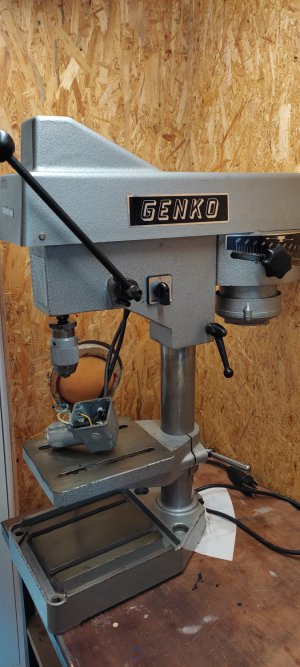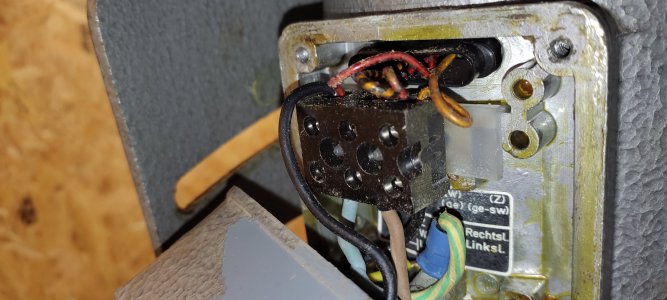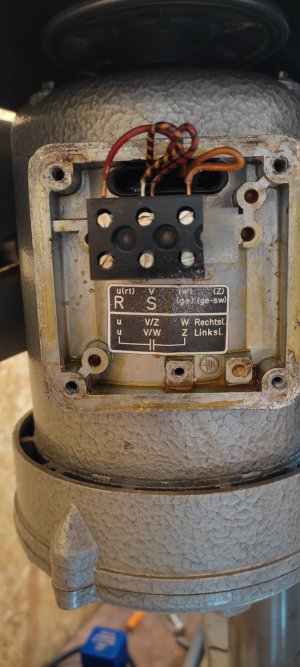- Joined
- Nov 8, 2020
- Messages
- 44
I seem to be getting unlucky when buying used machinery off the german equivalent of craigslist lately. I was sick and tired of my dirt cheap drill press, so I bought this used "Genko" brand drill press (was also sold by Metabo back in the 80s/90s). It is known for its good reputation in all regards a better built and sturdier machine compared to my cheap drill press.

On pickup, the drillpress was plugged in and tested - everything worked fine. When I got it home and plugged it in, it immediately trips the circuit breaker (not RCD) after switching it on. The motor doesn't move an inch before tripping, but there is also no arcing, humming, electrical noise or burnt smell noticable. Absolutely nothing.
Maybe someone can help me out troubleshooting this. It is a 4-wire 230V AC motor with 370W and a capacitor connected to one of the winding since its an AC motor. I first checked the wiring and it is correct. There is also no short to ground.
So I cannot imagine that the startup current is reaching the breakers limit - it is only a 370W AC Motor. For example my 2,1kW AC milling machine Motor is not tripping the breaker.
One of the windings has a resistance of 31 Ohm and the other one 11,5 Ohm. The second one is seemingly too low, right? At 230V this would mean a current of 230V/11,5Ohm=20A. (The breaker is rated at 16A)
One other thing I noticed is there is a resistance between the 31 Ohm winding and the motor casing of 37kOhm, while the other ones is infinite.
Other than that I don't know what to look out for anymore? I also don't have the device for measuring the capacitor.
Unfortunetely the motors casing has integral parts for the CVT transmission built into it, so I cannot replace it by a standardized one. If I can't fix it, the machine is scrap metal.



On pickup, the drillpress was plugged in and tested - everything worked fine. When I got it home and plugged it in, it immediately trips the circuit breaker (not RCD) after switching it on. The motor doesn't move an inch before tripping, but there is also no arcing, humming, electrical noise or burnt smell noticable. Absolutely nothing.
Maybe someone can help me out troubleshooting this. It is a 4-wire 230V AC motor with 370W and a capacitor connected to one of the winding since its an AC motor. I first checked the wiring and it is correct. There is also no short to ground.
So I cannot imagine that the startup current is reaching the breakers limit - it is only a 370W AC Motor. For example my 2,1kW AC milling machine Motor is not tripping the breaker.
One of the windings has a resistance of 31 Ohm and the other one 11,5 Ohm. The second one is seemingly too low, right? At 230V this would mean a current of 230V/11,5Ohm=20A. (The breaker is rated at 16A)
One other thing I noticed is there is a resistance between the 31 Ohm winding and the motor casing of 37kOhm, while the other ones is infinite.
Other than that I don't know what to look out for anymore? I also don't have the device for measuring the capacitor.
Unfortunetely the motors casing has integral parts for the CVT transmission built into it, so I cannot replace it by a standardized one. If I can't fix it, the machine is scrap metal.


Last edited:

